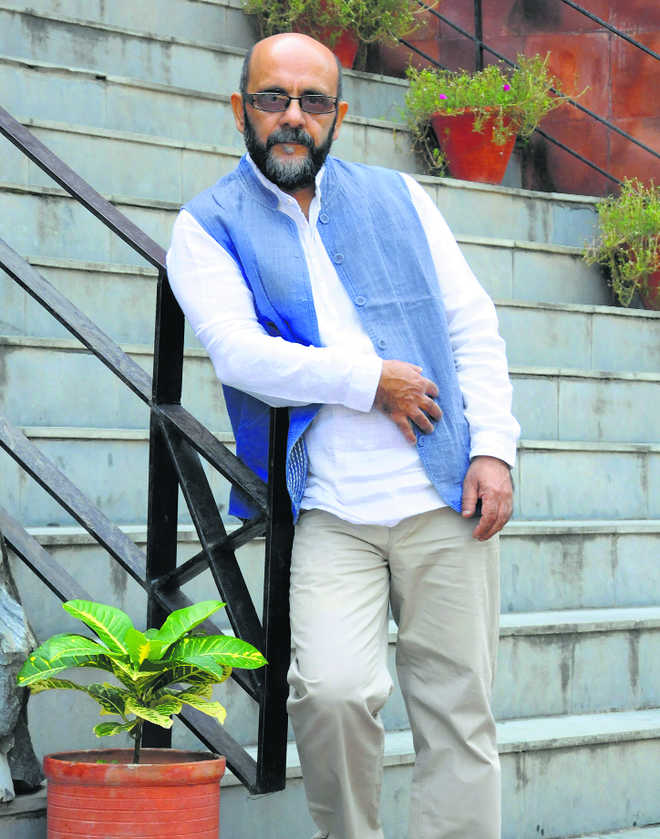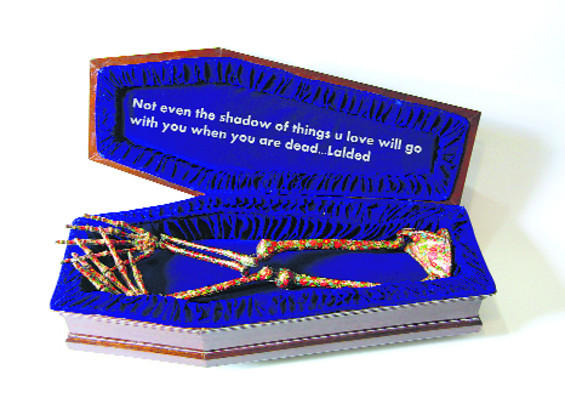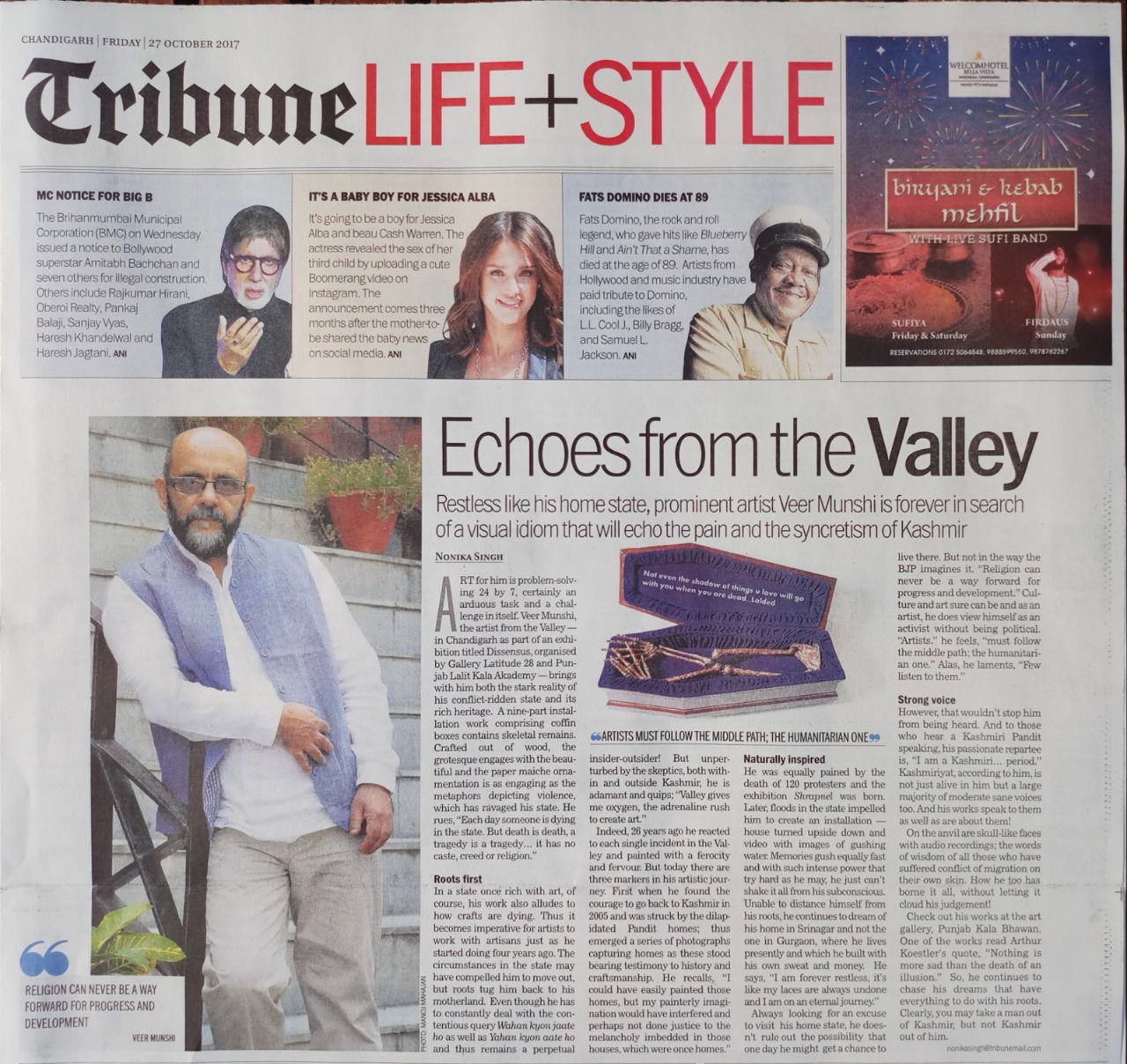Posted at: Oct 27, 2017, 12:36 AM; last updated: Oct 27, 2017, 12:36 AM (IST)
Echoes from the Valley
Restless like his home state, prominent artist Veer Munshi is forever in search of a visual idiom that will echo the pain and the syncretism of Kashmir


Nonika Singh
Art for him is problem-solving 24 by 7, certainly an arduous task and a challenge in itself. Veer Munshi, the artist from the Valley —in Chandigarh as part of an exhibition titled Dissensus, organised by Gallery Latitude 28 and Punjab Lalit Kala Akademy — brings with him both the stark reality of his conflict-ridden state and its rich heritage. A nine-part installation work comprising coffin boxes contains skeletal remains. Crafted out of wood, the grotesque engages with the beautiful and the paper maiche ornamentation is as engaging as the metaphors depicting violence, which has ravaged his state. He rues, “Each day someone is dying in the state. But death is death, a tragedy is a tragedy… it has no caste, creed or religion.”
Roots first
In a state once rich with art, of course, his work also alludes to how crafts are dying. Thus it becomes imperative for artists to work with artisans just as he started doing four years ago. The circumstances in the state may have compelled him to move out, but roots tug him back to his motherland. Even though he has to constantly deal with the contentious query Wahan kyon jaate ho as well as Yahan kyon aate ho and thus remains a perpetual insider-outsider! But unperturbed by the skeptics, both within and outside Kashmir, he is adamant and quips; “Valley gives me oxygen, the adrenaline rush to create art.”Indeed, 26 years ago he reacted to each single incident in the Valley and painted with a ferocity and fervour. But today there are three markers in his artistic journey. First when he found the courage to go back to Kashmir in 2005 and was struck by the dilapidated Pandit homes; thus emerged a series of photographs capturing homes as these stood bearing testimony to history and craftsmanship. He recalls, “I could have easily painted those homes, but my painterly imagination would have interfered and perhaps not done justice to the melancholy imbedded in those houses, which were once homes.”
Naturally inspired
He was equally pained by the death of 120 protesters and the exhibition Shrapnel was born. Later, floods in the state impelled him to create an installation — house turned upside down and video with images of gushing water. Memories gush equally fast and with such intense power that try hard as he may, he just can’t shake it all from his subconscious. Unable to distance himself from his roots, he continues to dream of his home in Srinagar and not the one in Gurgaon, where he lives presently and which he built with his own sweat and money. He says, “I am forever restless, it’s like my laces are always undone and I am on an eternal journey.” Always looking for an excuse to visit his home state, he doesn’t rule out the possibility that one day he might get a chance to live there. But not in the way the BJP imagines it. “Religion can never be a way forward for progress and development.” Culture and art sure can be and as an artist, he does view himself as an activist without being political. “Artists.” he feels, “must follow the middle path; the humanitarian one.” Alas, he laments, “Few listen to them.”
Strong voice
However, that wouldn’t stop him from being heard. And to those who hear a Kashmiri Pandit speaking, his passionate repartee is, “I am a Kashmiri… period.” Kashmiriyat, according to him, is not just alive in him but a large majority of moderate sane voices too. And his works speak to them as well as are about them! On the anvil are skull-like faces with audio recordings; the words of wisdom of all those who have suffered conflict of migration on their own skin. How he too has borne it all, without letting it cloud his judgement! Check out his works at the art gallery, Punjab Kala Bhawan. One of the works read Arthur Koestler’s quote, “Nothing is more sad than the death of an illusion.” So, he continues to chase his dreams that have everything to do with his roots. Clearly, you may take a man out of Kashmir, but not Kashmir out of him.
https://punjablalitkalaakademi.com/wp-admin/post.php?post=3411&action=edit

